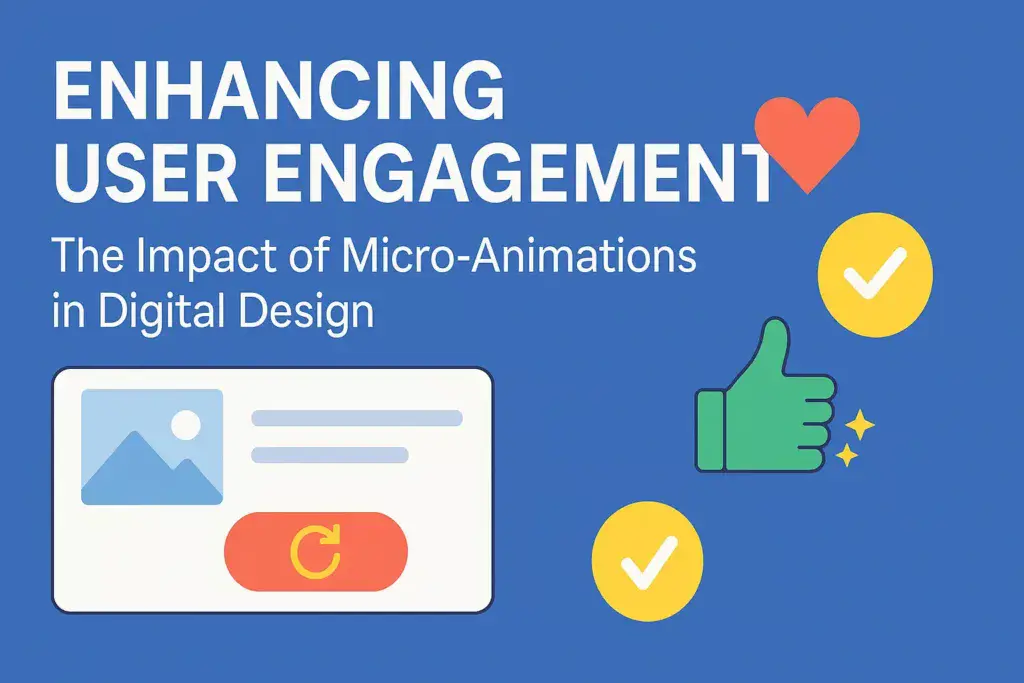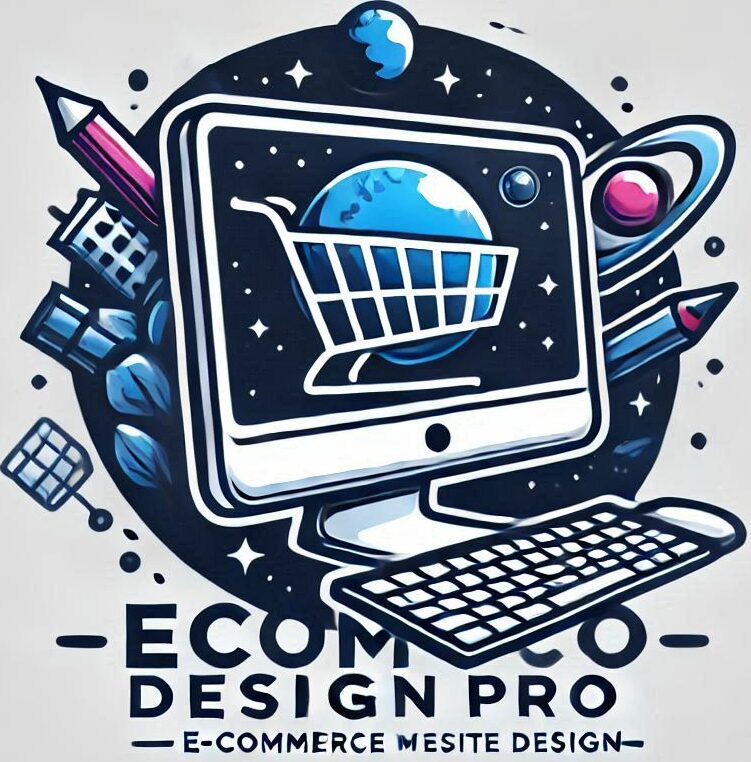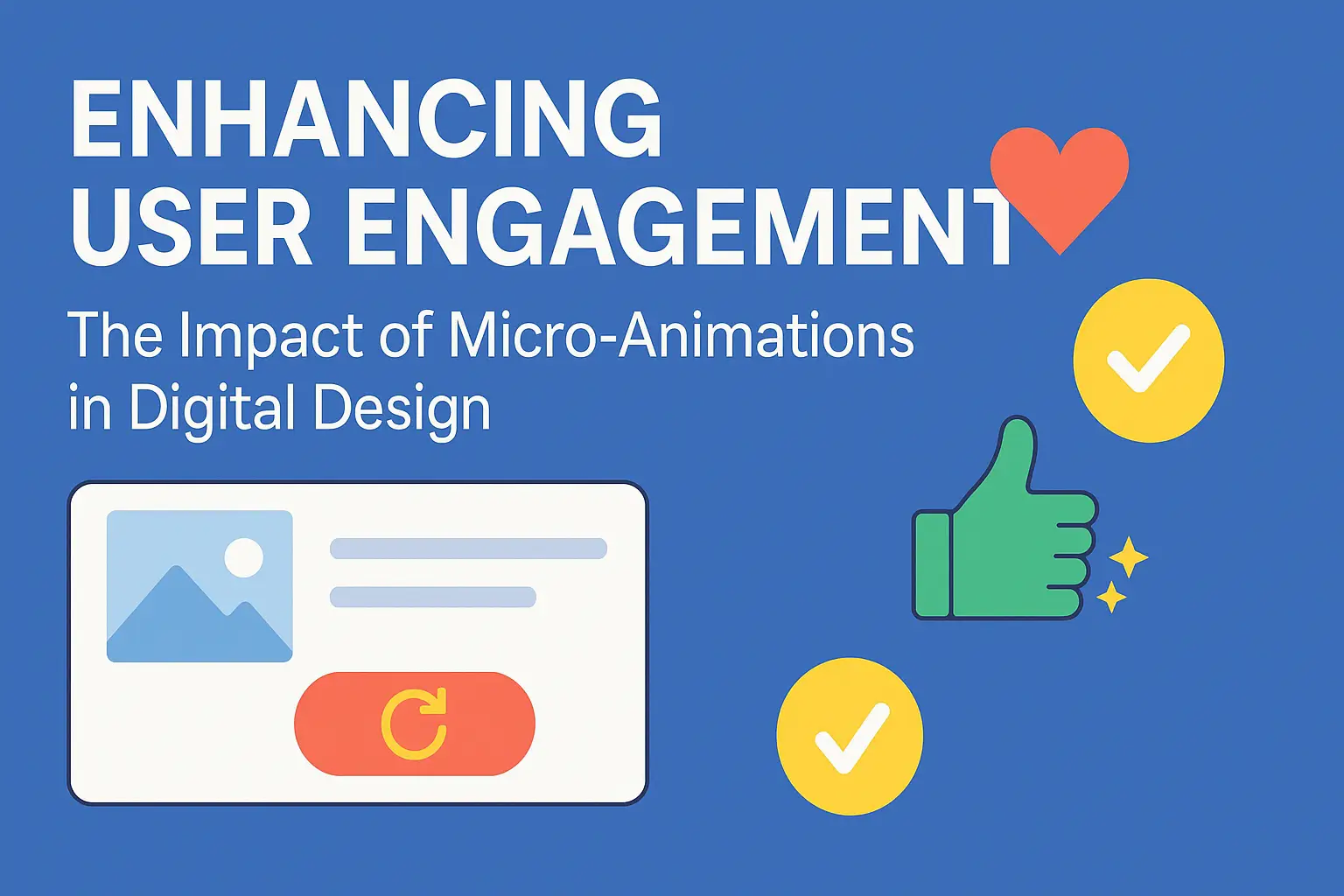
I. Introduction to Micro-Animations
Micro-animations on user engagement are transforming the digital experience by making interfaces more interactive, intuitive, and emotionally resonant. In today’s fast-paced digital landscape, these subtle animations—such as hover effects, loading indicators, and button transitions—play a vital role in capturing attention, guiding users, and enhancing satisfaction. This article explores how micro-animations can be strategically used to boost engagement, improve UX, and elevate your brand’s online presence.
The significance of user engagement in digital design cannot be overstated. In an era where attention spans are shrinking and competition for user interaction is fierce, designers must employ strategies that not only attract users but also encourage them to stay and interact with the content. Engaging users is crucial for achieving higher conversion rates, fostering brand loyalty, and ensuring a positive overall experience. Micro-animations play a pivotal role in this process by making interfaces feel more intuitive and responsive, ultimately leading to a more satisfying user journey.
This article will explore the multifaceted impact of micro-animations on user engagement. We will first delve into the psychological effects of these animations, examining how they can capture attention, evoke emotions, and aid in information retention. Next, we will look at practical applications of micro-animations across various domains, from user interfaces to marketing strategies. However, the use of micro-animations is not without its challenges; we will also discuss potential pitfalls, including overuse and performance issues. Finally, we will conclude with insights into the future of micro-animations in enhancing user engagement, highlighting their potential to shape the way users interact with digital environments.
II. Psychological Effects of Micro-Animations
Micro-animations, often subtle yet powerful, play a crucial role in shaping user experiences across digital platforms. Their psychological impact is multifaceted, influencing how users perceive and interact with content. This section delves into the various psychological effects of micro-animations, examining how they capture attention, affect emotions, and influence cognitive processes.
A. How Micro-Animations Capture Attention
At their core, micro-animations are designed to grab users’ attention in an environment where distractions abound. Research in cognitive psychology suggests that animated elements are more likely to draw focus than static ones. This phenomenon, known as the “motion effect,” occurs because our brains are wired to respond to movement, often interpreting it as a signal of relevance or importance. For instance, a button that subtly pulsates or a notification icon that bounces can effectively guide users’ gaze and encourage interaction.
Moreover, micro-animations can serve as visual cues, helping users navigate interfaces more intuitively. By drawing attention to specific areas, micro-animations help boost user engagement with micro-interactions, facilitating a seamless user journey. This heightened engagement not only captures attention but also sustains it, contributing to a more immersive and dynamic user experience.
B. Impact on User Emotions and Satisfaction
Micro-animations have the power to evoke emotions, enhancing user satisfaction and overall sentiment towards a product or service. When users encounter animations that are delightful or surprising, it can create a sense of joy or satisfaction. For example, a playful animation that occurs when a task is completed can reinforce a positive emotional response, encouraging users to return to the interface.
Additionally, micro-animations can help humanize interactions with technology, bridging the gap between digital experiences and human emotions. By incorporating elements that resonate with users—such as a friendly bounce or a smooth transition—designers can foster a connection that enhances users’ emotional investment in the product. This emotional engagement is critical; satisfied users are more likely to recommend a product and continue using it, significantly impacting brand loyalty.
C. Cognitive Load and Information Retention
The relationship between micro-animations and cognitive load is another significant aspect of their psychological effects. Cognitive load refers to the amount of mental effort being used in working memory. While excessive animations can overwhelm users and detract from the core message, well-designed micro-animations can alleviate cognitive load by guiding users through complex information seamlessly.
For instance, animations that illustrate how to interact with a new feature can provide clarity and context, making it easier for users to process information. By breaking down complex tasks into digestible, animated steps, designers can enhance information retention and understanding. Studies have shown that when learners are presented with animated content, they tend to remember information better than when presented with static images alone.
In summary, the psychological effects of micro-animations are profound, influencing attention capture, emotional responses, and cognitive processing. By understanding and harnessing these effects, designers can create more engaging and user-friendly experiences that resonate with their audience.
III. Practical Applications of Micro-Animations
Micro-animations have become a pivotal component in the realm of digital design, enhancing user experiences across various platforms. Their subtle yet powerful impact can be observed in multiple contexts, from user interfaces to storytelling and marketing. This section delves into the practical applications of micro-animations, illustrating their versatility and effectiveness in engaging users.
A. Micro-Animations in User Interfaces
In user interface (UI) design, micro-animations serve as visual cues that guide users through digital experiences. They can indicate loading processes, transitions between screens, or changes in state, providing feedback that reassures users their actions are recognized. For example, a button that subtly pulses or changes color upon hover not only enhances interactivity but also encourages users to click. These animations can make interfaces more intuitive, helping users navigate seamlessly and reducing the likelihood of frustration.
Moreover, micro-animations can improve usability by highlighting key features or functions within an application. For instance, a small animation that illustrates the process of filling out a form can alleviate confusion and enhance user confidence. By breaking down complex interactions into digestible, animated steps, designers can ensure users remain engaged and informed throughout their journey.
Micro-animations on user engagement are most effective when integrated with tools that support lightweight, scalable effects. Integrate lightweight Lottie animations easily to enhance your UI without sacrificing performance.
B. Enhancing Storytelling Through Animations
Storytelling is an essential element of engaging digital content, and micro-animations play a crucial role in bringing narratives to life. By integrating animations into storytelling, designers can evoke emotions, create anticipation, and maintain user interest. For example, animated illustrations can transition smoothly between scenes, providing a dynamic flow that captivates the audience.
In educational contexts, micro-animations can facilitate learning by visually representing concepts and processes. An animated infographic that explains a scientific principle can make the information more relatable and memorable. By appealing to both visual and cognitive learning styles, micro-animations enhance comprehension and retention, allowing users to absorb information more effectively.
C. Micro-Animations in Marketing and Branding
In the competitive landscape of digital marketing, micro-animations can set brands apart by enhancing their identity and message. Brands can use animations to create memorable logos, eye-catching advertisements, or engaging social media content. These animations not only attract attention but also foster a deeper emotional connection with the audience.
For example, a brand might utilize micro-animations in its social media campaigns to draw users in. A product revealing itself through a smooth animation can create intrigue, prompting users to engage with the content. Additionally, micro-animations can reinforce brand values and personality, making the overall experience more cohesive and enjoyable for the user.
As branding and marketing increasingly rely on user engagement, the strategic use of micro-animations can significantly impact a campaign’s success. By creating interactive and visually appealing content, brands can enhance user experience and drive conversions.
In summary, the practical applications of micro-animations are vast and varied, spanning user interfaces, storytelling, and marketing. Their ability to enhance user engagement makes them an invaluable tool in digital design, ensuring that interactions are not only functional but also enjoyable. As we continue to explore the potential of micro-animations, it is clear that they will play an essential role in shaping the future of user experience.
IV. Challenges and Considerations
While micro-animations can significantly enhance user engagement, their implementation is not without challenges and considerations that designers must navigate carefully to ensure an optimal user experience.
A. Overuse and Potential Distractions
One of the primary pitfalls of micro-animations is the risk of overuse. When too many animations are incorporated into a design, they can overwhelm users rather than enhance their experience. Instead of guiding attention, excessive animations may lead to cognitive overload, making it difficult for users to focus on the task at hand. Designers must strike a delicate balance, ensuring that micro-animations serve a clear purpose without becoming a distraction. Thoughtful integration—where animations are used judiciously to highlight actions, transitions, or important information—can help maintain user engagement without detracting from usability.
B. Performance Issues and Accessibility
Another consideration when implementing micro-animations is their potential impact on performance. High-quality animations can require additional resources, which may slow down page load times or affect responsiveness, particularly on mobile devices with limited processing power. Designers must ensure that animations are optimized to minimize any negative effects on performance. Additionally, accessibility is a crucial factor; some users may have motion sensitivity or other disabilities that make animations challenging to process. Providing options to reduce or disable animations can help make digital experiences more inclusive, allowing all users to engage with content effectively.
C. Balancing Aesthetics and Functionality
The aesthetic appeal of micro-animations can be enticing, but designers must not lose sight of functionality. The primary goal of any user interface is to facilitate interaction and convey information clearly. Aesthetic animations that do not serve a functional purpose can dilute the effectiveness of a design. Therefore, designers should prioritize animations that enhance the user experience while ensuring clarity and usability remain front and center. This balance is essential in creating a seamless user journey that is both visually appealing and easy to navigate.
In conclusion, while micro-animations can be a powerful tool for enhancing user engagement, their successful implementation requires careful consideration of potential challenges. By addressing issues of overuse, performance, accessibility, and the balance between aesthetics and functionality, designers can leverage micro-animations to create engaging, user-friendly experiences that resonate with their audience.
V. Conclusion: The Future of Micro-Animations in User Engagement
As digital landscapes continue to evolve, the role of micro-animations in enhancing user engagement is poised to become increasingly significant. These subtle yet impactful design elements not only serve aesthetic purposes but also facilitate meaningful interactions between users and digital interfaces. Looking ahead, several trends and considerations will shape the future of micro-animations in user engagement.
First and foremost, the growing emphasis on user-centered design will drive the integration of micro-animations into various digital platforms. Designers are increasingly recognizing that these animations can significantly enhance user experience by providing feedback, guiding navigation, and creating a sense of continuity. As technology advances, we can expect to see more sophisticated micro-animations that adapt to user behavior, delivering personalized experiences that resonate on an individual level.
Moreover, advancements in artificial intelligence and machine learning are likely to influence the development of micro-animations. By leveraging data analytics, designers can gain insights into user preferences and interactions, enabling them to create targeted animations that enhance engagement. This data-driven approach will not only optimize user experience but also allow brands to communicate their messages more effectively, making micro-animations a vital tool in digital marketing strategies.
However, as the potential of micro-animations expands, so too do the challenges associated with their implementation. Striking the right balance between visual appeal and functionality remains crucial. Designers must ensure that micro-animations enhance rather than detract from the user experience. This involves careful consideration of factors such as load times, accessibility, and the context in which animations are used. The future will require a thoughtful approach that prioritizes user needs while still embracing creativity and innovation.
In conclusion, micro-animations are set to play an essential role in the future of user engagement. As we move towards more dynamic and interactive digital experiences, the thoughtful application of micro-animations will help bridge the gap between aesthetics and functionality. By continuing to explore and refine these design elements, we can create interfaces that not only captivate users but also foster deeper connections and satisfaction. The journey of micro-animations is just beginning, and their potential to transform user engagement is limitless.


